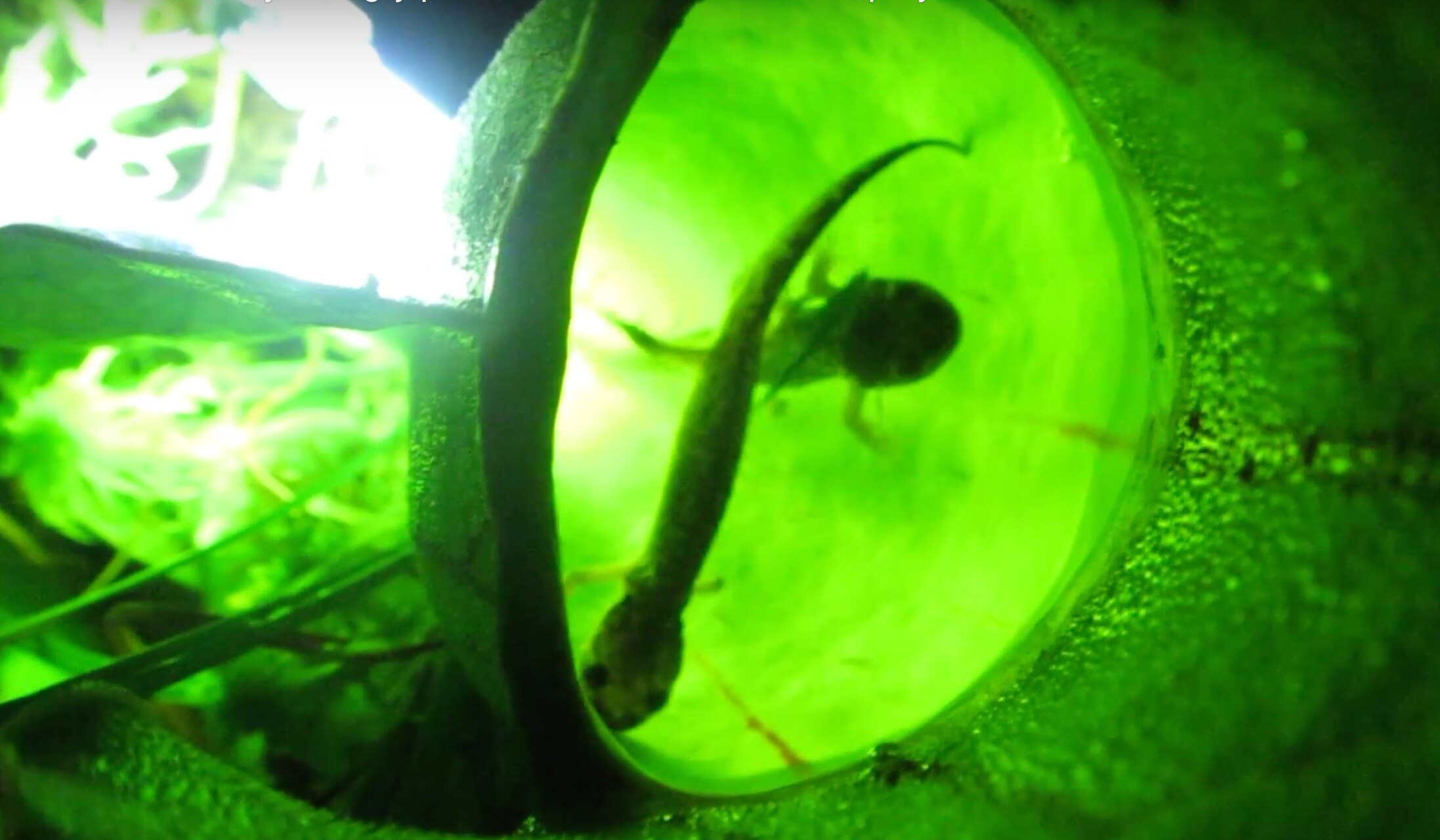Create a free profile to get unlimited access to exclusive videos, sweepstakes, and more!
Little Shop of Horrors comes to life with this salamander-eating plant

You know how Audrey in Little Shop of Horrors has an insatiable appetite that soon has her devouring human flesh? Plants haven’t gotten to having our species for dinner yet, but they’ve obviously moved beyond insects to juicier prey.
Researchers at the University of Guleph in Canada discovered that the carnivorous pitcher plant, or at least those lurking in Ontario’s Algonquin Park wetlands, has a craving for baby salamanders. These are the kind of horrors you find when you go exploring the shadowy world of bogs.
Plants that eat flesh don’t just do so because it makes them look like horror movie props.
“Botanical carnivory is an evolutionary marvel of the plant kingdom that has long fascinated general onlookers and naturalists alike,” said University of Guleph Professor Alex Smith, Patrick D. Moldowan from the Unversity of Toronto and colleagues in a study recently published in the journal Ecology. “Carnivory in plants has evolved multiple times across the world, often in wet, open, and nutrient‐poor environments, as an alternative pathway of nutrient acquisition.”
Until now, pitcher plants were known to feast on things like spiders and other creepy crawlies, but never any vertebrates. When something falls into the rainwater collected in its bell-shaped leaves, it is doomed to decompose in the plant’s lethal cocktail of digestive enzymes. An undergraduate student first spotted this unusual prey in 2017, which led to a larger investigation of pitcher plants in the area the following year.
By the way, that former undergrad is now one of the co-authors of the study examining the pitcher plant’s taste in salamanders.
The most salamanders ended up trapped right after large-scale transformations from their larval state, a time when they are able to venture out on four legs but still vulnerable to predators with and without teeth. They are thought to have either fallen into the pitcher plants or crawled in to avoid predators…at least the obvious ones. They don’t know how appetizing they look to a carnivorous plant in an environment like Algonquin Park, which lacks fish.
Another element of horror here is that they don’t exactly perish in seconds. Smith and his team found it can take anywhere from three to nineteen days for one of these vicious plants to kill a salamander. Along with digestive enzymes, other organisms, including pathogens, and environmental factors like heat or starvation can mean the end for a salamander stuck in one of these things.
Smith is now seriously considering a sign warning parents to watch their children around vertebrate-eating plants.
(via University of Guleph)


























